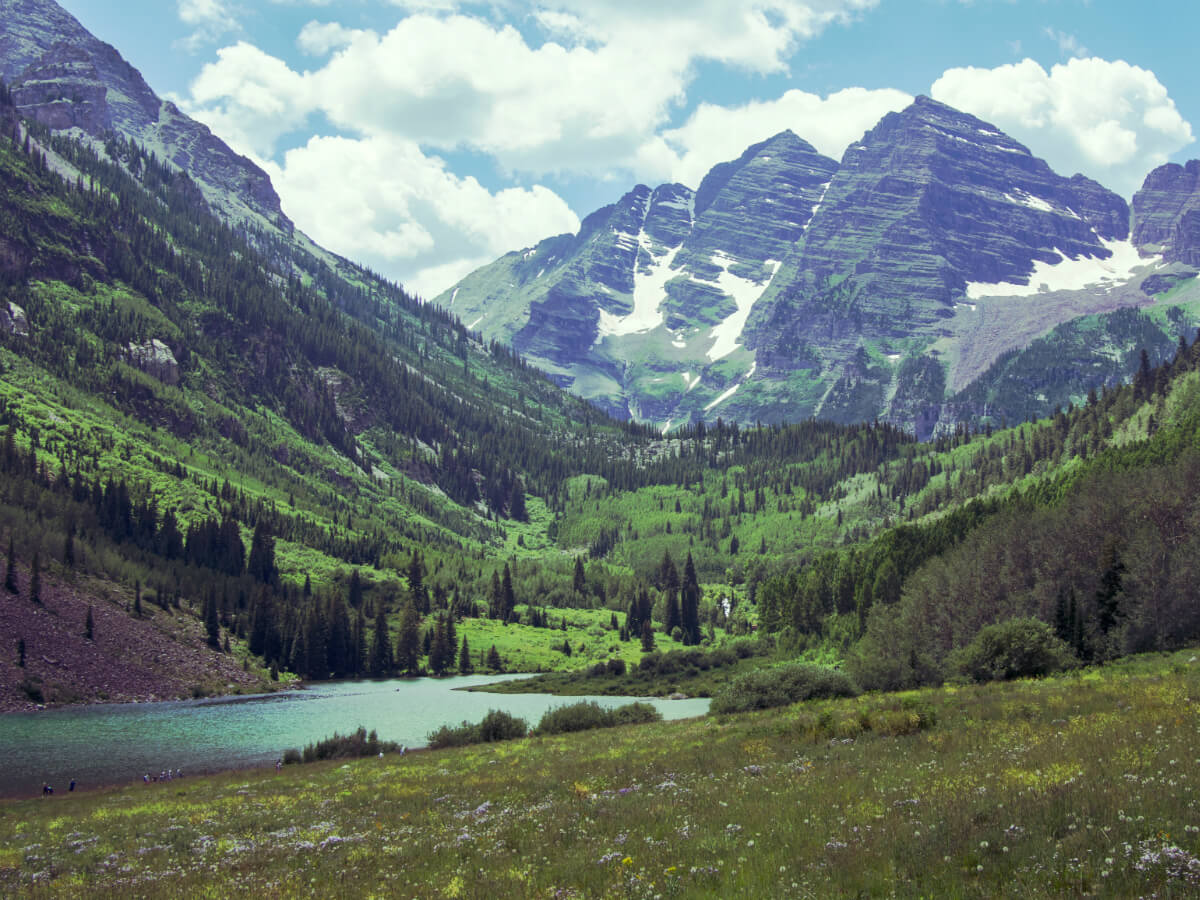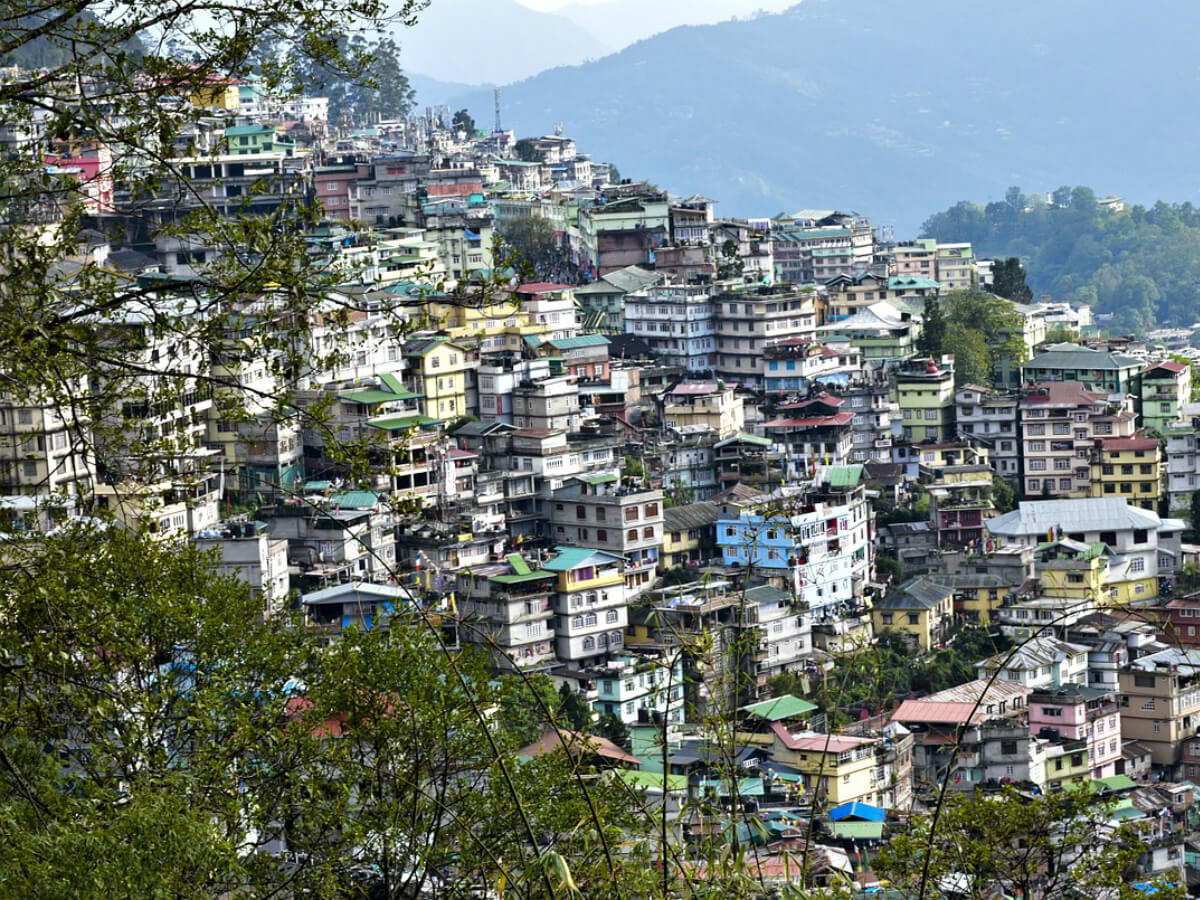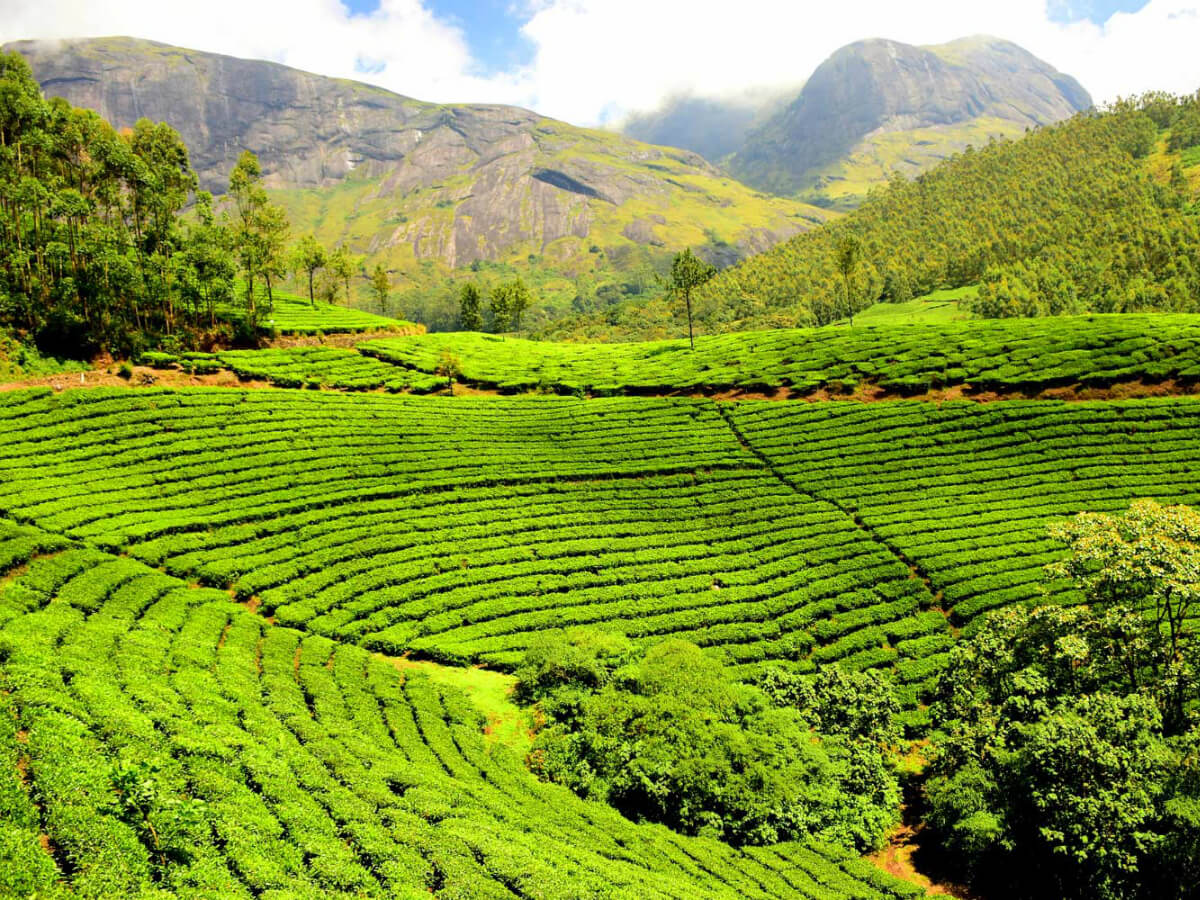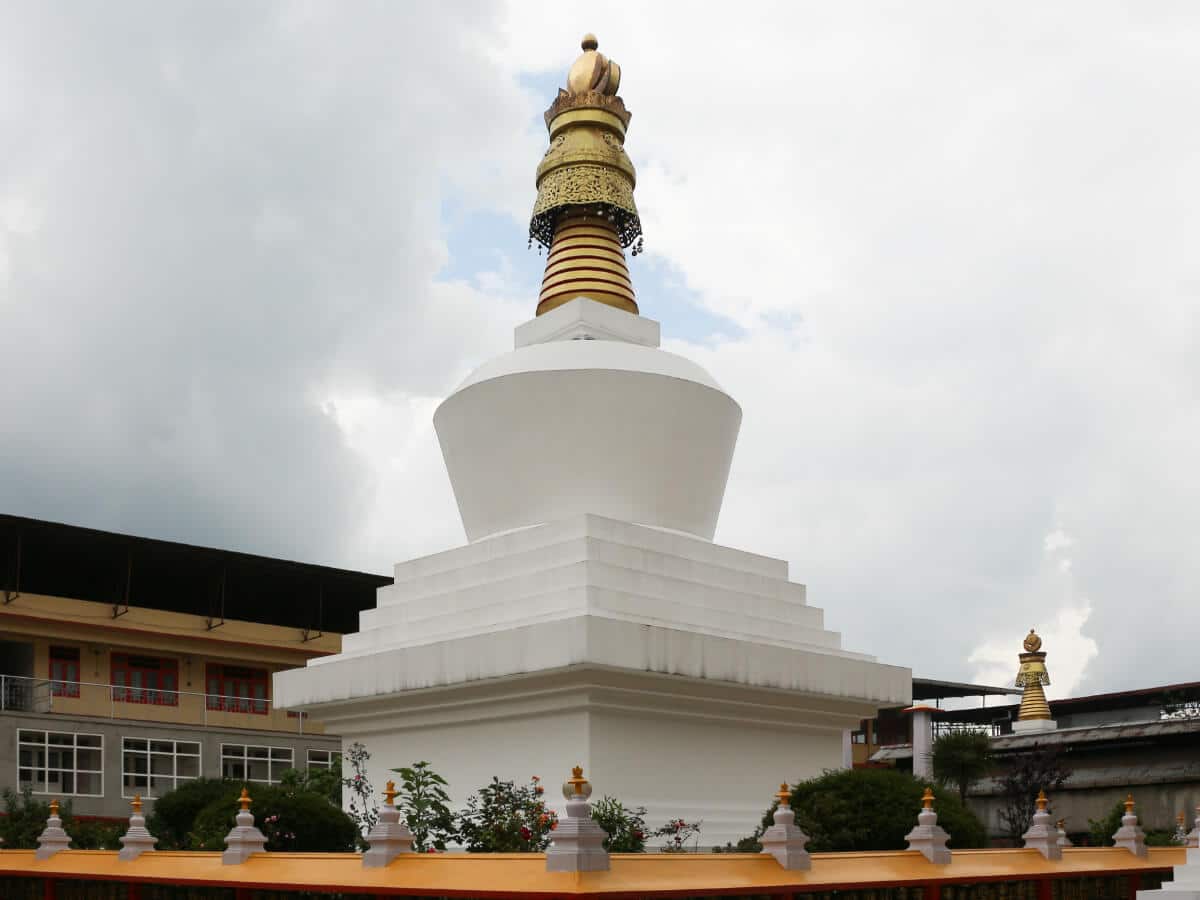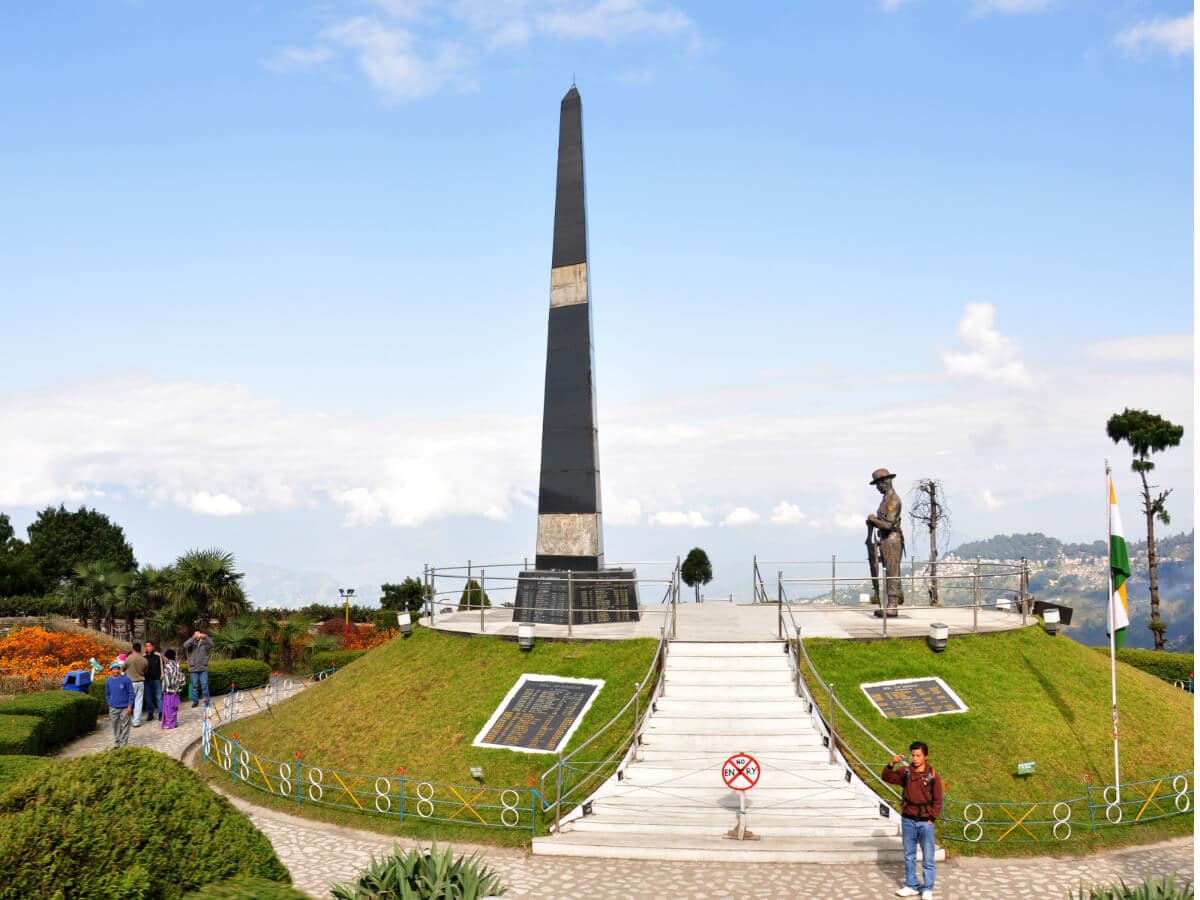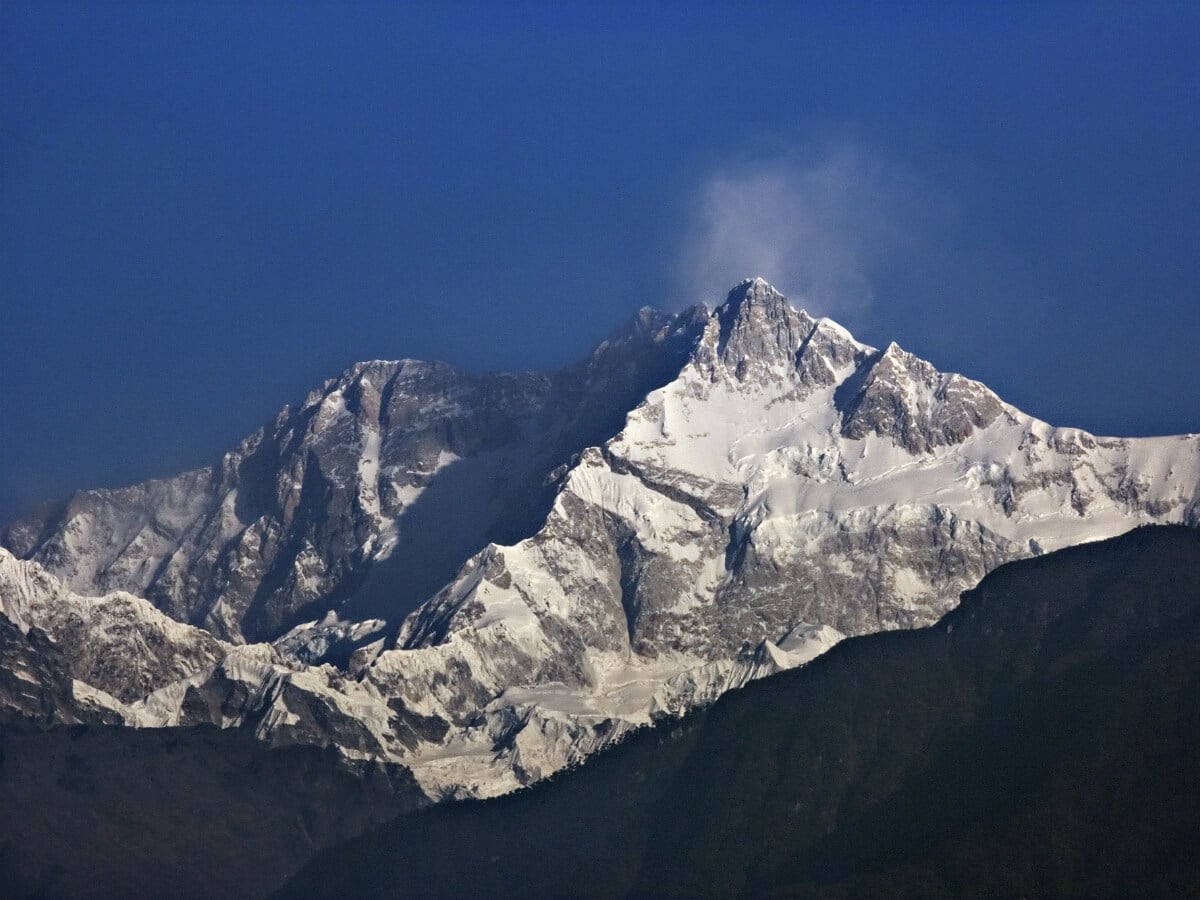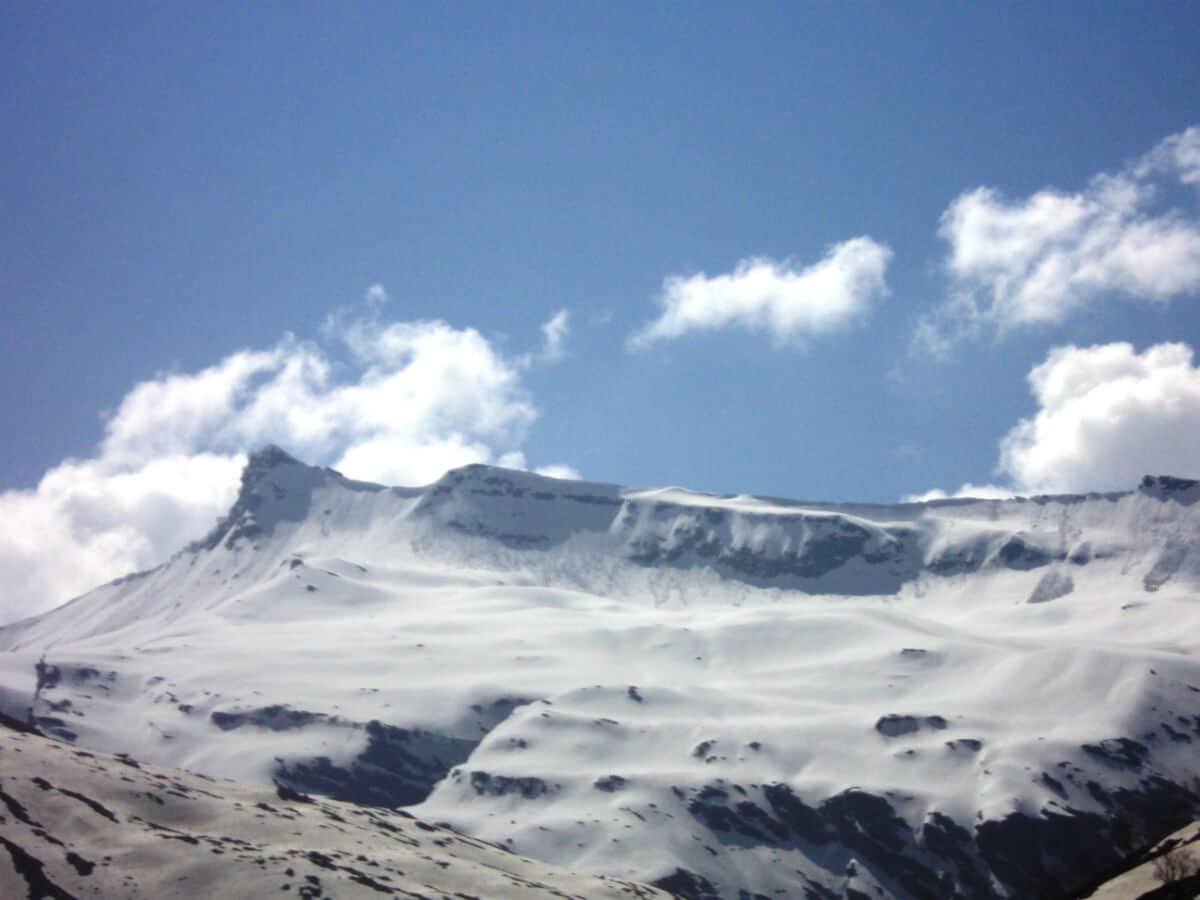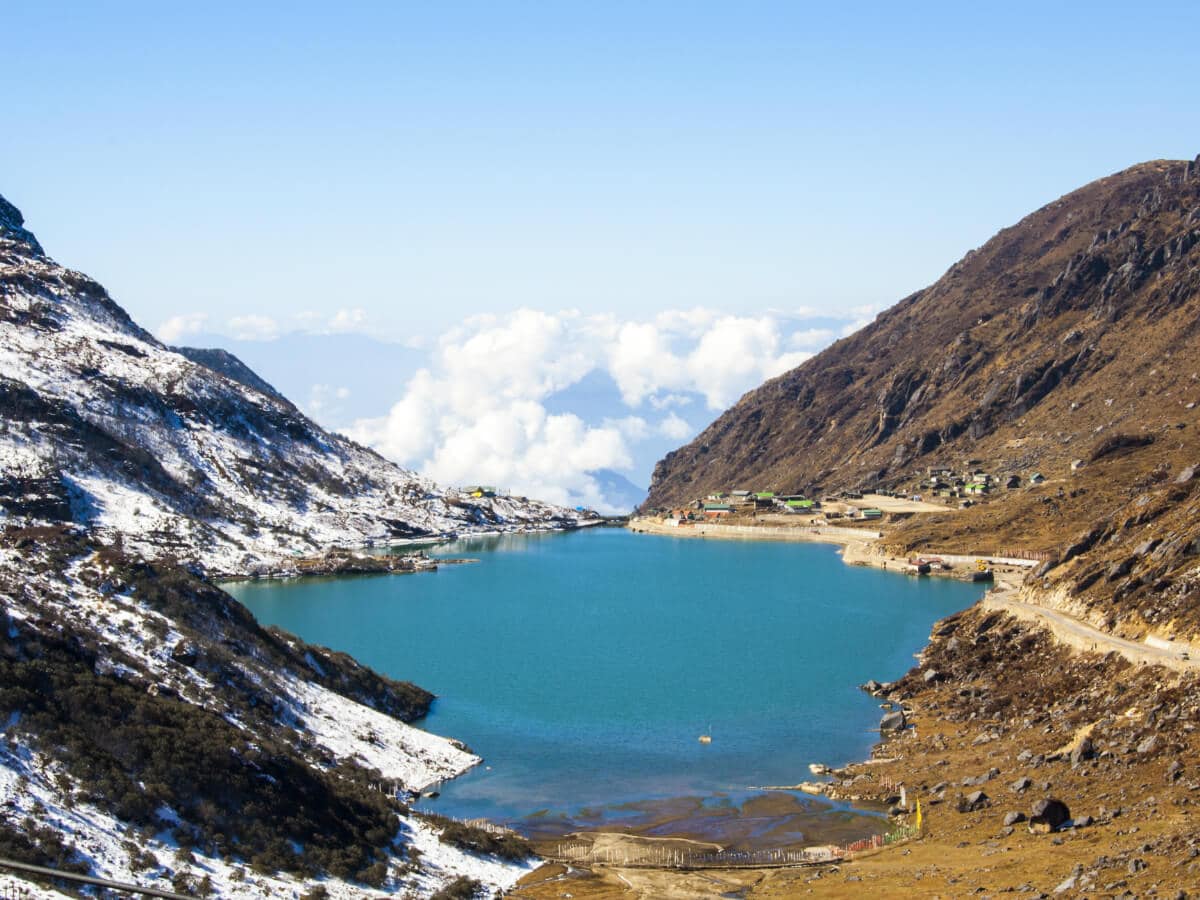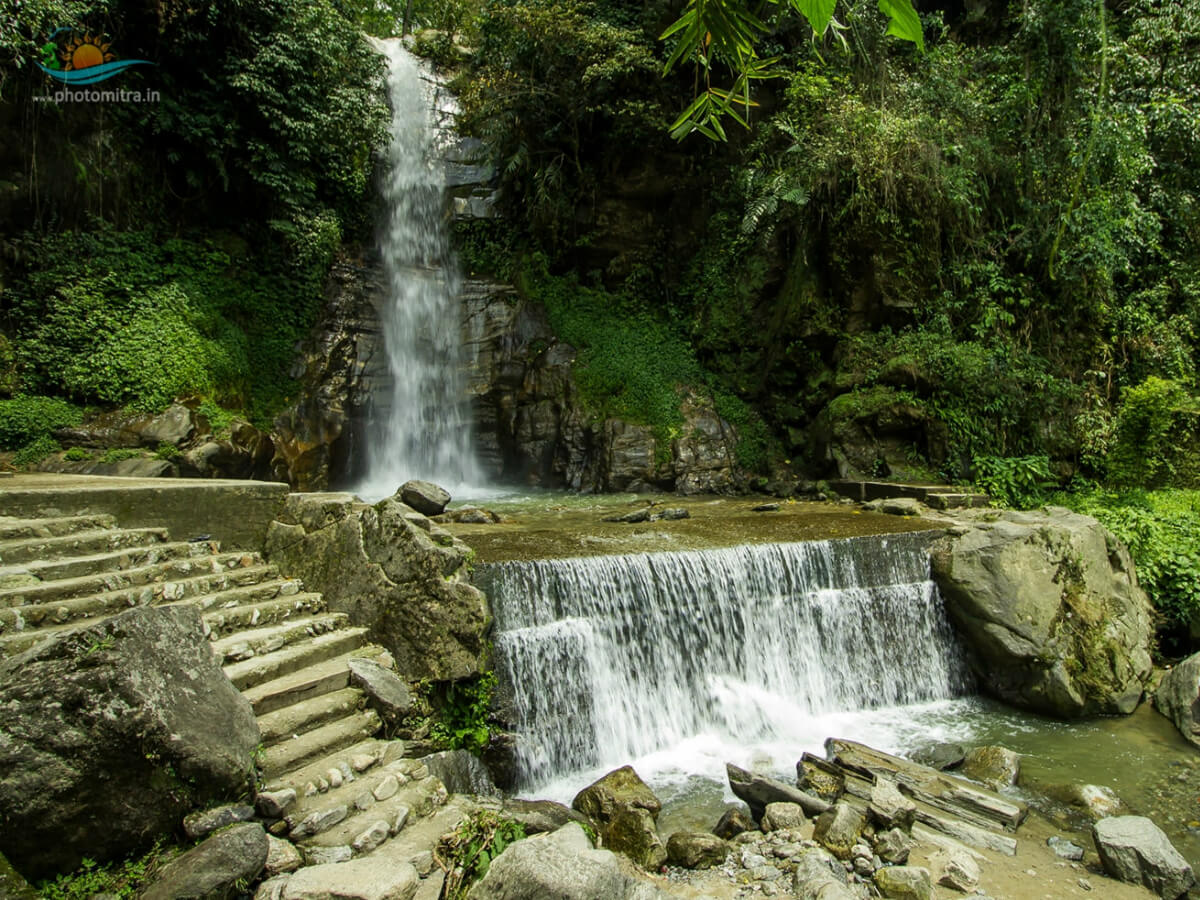Tour Packages
East India Tour Packages
SUPER DEAL PRICE
STARTS FROM
per person on twin sharing

Victoria Memorial is a white marble monument in Kolkata.

The Barabati Fort in Odisha reflects Cuttack's history.

India’s fourth most populous state is West Bengal.

Largest mangrove forest in world is the Sundarbans.

Bodh Gaya, the most sacred pilgrimage destination.

Chilika Lake is world’s second-largest coastal lagoon.
East India - Overview

By Purpose
Couples
For Newlywed Vacations
Family
For Family Vacations
Top Travel Destinations
Kolkata
Darjeeling
Sundarbans
Bodh Gaya
Konark
Puri
Cuttack
Deoghar
Satapada
Patna
Ranchi
Bhubaneswar
Everything You Need to Know About East India
East India, or Eastern India, is a cornucopia of outstanding natural scenery. It comprises four states: Bihar, Jharkhand, Odisha, and West Bengal. Whether you’re looking for the beauty of mountains, the serenity of beaches, the spiritual ambience of temples, or the rich history of ancient monuments, the eastern region of India has it all. Explore the art, architecture, history, cuisines, and diverse landscapes of Eastern India with GT Holidays’ East India tour packages. If you’re looking for a customised itinerary, contact us on Instagram, and we will be more than happy to help you.
Table of Content:
About East India
About West Bengal
During the Vedic period, West Bengal was called the kingdom of Vanga. In the 3rd century BCE, during the reign of emperor Ashoka, the state became a part of the extensive Mauryan empire. With the Pala dynasty began the golden period in West Bengal, which is when notable contributions were made in the field of art, architecture, and literature. The 18th century brought about the British colonial rule in Bengal. Kolkata (which was then known as Calcutta) became the capital of British India in 1772. A cultural, artistic, intellectual, and social movement was initiated in West Bengal in the 19th century, known as the Bengal Renaissance. Several vital figures fought for social causes, such as the abolition of sati and women’s education during this period, such as Swami Vivekananda, Ishwar Chandra Vidyasagar, and Raja Ram Mohan Roy.
West Bengal offers a rich education landscape, as is evident from the numerous degree-granting universities the state is home to. This includes prestigious universities, such as the Jadavpur University, University of Calcutta, and Rabindra Bharati University. Agriculture is a significant part of the economy and landscape of Bengal. The leading crop in almost every region in the state is rice. The central and southern portions of West Bengal produce several fruits, such as mangoes, bananas, and jackfruit.
About Bihar
Bihar played a vital role in India’s independence from the British. Mahatma Gandhi’s satyagraha movement was initiated in the Champaran region of Bihar. Rajendra Prasad, who was the first elected president of independent India, was born in Bihar’s Siwan district. In January 1950, Bihar attained statehood. The Ganges River divides Bihar into two unequal halves, namely North Bihar and South Bihar.
Agriculture is a significant component of Bihar’s economy, with rice being the major crop that’s grown in the state. Apart from rice, the other crops cultivated in Bihar are corn, wheat, legumes, and barley. The cultivation of fruits and vegetables is extensive across Bihar. In the regions of Darbhanga and Muzaffarpur, you will find fruits like litchis, bananas, and mangoes.
About Jharkhand
The area now known as Jharkhand came under the control of the British as a part of Bihar in 1765. During the late 18th and early 19th centuries, the British eventually gained more control over the northern areas of modern-day Jharkhand. During this period, revolts against the British took place in Chota Nagpur, such as the Ho revolt and the Munda Rebellion. Chota Nagpur was segregated from Bihar in November 2000, which then led to the formation of Jharkhand.
Since the beginning of the 21st century, when the region achieved statehood, Jharkhand’s government focussed on economic planning and development. Some of the major sectors of the economy of Jharkhand include infrastructure, information technology, agriculture, transportation, and local craft production. 75% of Jharkhand’s population is employed in the agriculture sector. Some of the primary crops grown in Jharkhand are rice, wheat, maize, pulses, potatoes, and oilseeds.
About Odisha
Odisha had several names in the past, such as Kalinga, Utkal, and Odradesha. The state has a rich maritime trading history. Sadhabs, the ancient Odia mariners, travelled to islands such as Bali, Borneo, Sumatra, and Java during the 4th and 5th centuries B.C for this purpose. During the rule of King Ashoka, ancient Odisha maintained its trading relations with international destinations, which included the first three centuries of the Christian era. The region of Orissa (as it was previously known) saw the reign of numerous empires, such as Emperor Kharavela of the Chedi dynasty and the kings of the Somavanshi dynasty.
Almost three-fifths of Odisha’s working population is employed in agriculture. The state’s crops include rice, sugarcane, jute, oilseeds, pulses, corn, and wheat. Odisha is also a primary producer of bauxite, graphite, manganese ore, nickel ore, and chromite.
Tidbits
- Kolkata, or Calcutta as it was earlier called, was the capital of British India from 1772 to 1911.
- The eastern region of India has the third-largest cricket stadium in the world by seating capacity, Eden Gardens.
- East India is believed to be the birthplace of Goddess Sita, born in the city of Sitamarhi in Bihar.
- Odissi, which originated in Odisha, is considered to be the oldest of India’s classical dance forms.
- Nalanda University, believed to be one of the world’s first residential universities was in Magadha or modern-day Bihar.
- India’s first planned industrial city, Jamshedpur is located in Jharkhand.
- Odisha’s Dhanu Yatra is believed to be the world’s largest open-air theatre.
- East India is home to the coal capital of India, Dhanbad in Jharkhand.
- The Birla Planetarium in Kolkata is the largest planetarium in Asia and the second-largest planetarium in the world.
- Mahatma Gandhi’s first Satyagraha movement was initiated in Bihar’s Champaran district.
- Kolkata’s Indian Museum is Asia’s oldest and largest multipurpose museum.
- Jamshedpur was the location of the first Tata Motors plant, which was established in 1945.
- East India plays host to the oldest operating port in India, Kolkata Port.
Things to Know Before Visiting East India
- When you’re in a crowded place, be careful of your belongings. Try not to step out too late at night, especially in remote areas.
- Avoid drinking water at the local restaurants and roadside eateries. Carry bottled water whenever you go out.
- The vegetation in East India is fragile. Therefore, make sure to follow the designated trails.
- When you visit the Himalayan region, remember that it is illegal to take away flora and fauna in the form of roots or seeds.
- When you visit a forest area, don’t use plastic bottles or plastic bags as it harms the environment. Don’t throw it in the forest; instead, carry it back to throw it in a garbage bin.
- Dress modestly while visiting a holy site.
- Leaving donations at a monastery is considered customary, and so is circling a shrine in a clockwise direction.
- Don’t take anyone’s picture without their permission.
- Avoid using wood as fuel to cook food at campsites.
- Don’t use your left hand to touch people, receive something, or pass something to another person, as the left hand is considered unclean.
East India At A Glance
| State | Food | Shopping | Popular Places | Best Time to Visit |
| West Bengal | Aloo posto, ilish macher jhol, shukto, phuchka, mutton biryani, sandesh, mishti doi, malpua, roshogolla | Bengali sweets, Darjeeling tea, conch shell bangles, jute products, terracotta handicrafts, Kalighat paintings | Kolkata, Darjeeling, Shantiniketan, Siliguri, Bishnupur, Sundarbans | October to March |
| Bihar | Litti chokha, chana ghugni, kesar peda, sattu paratha, khaja, balushahi | Madhubani paintings, silk sarees, bamboo and cane products, leather items, jewellery | Patna, Gaya, Deoghar, Muzaffarpur, Rajgir | October to March |
| Jharkhand | Dhuska, pittha, litti chokha, chilka roti, malpua, aloo chokha, bamboo shoot | Tribal jewellery, terracotta crafts, bamboo and cane products, paitkar paintings | Ranchi, Jamshedpur, Dhanbad, Netarhat, Hazaribagh, Ghatshila | October to March |
| Odisha | Dalma, pakhala, chhena poda, santula, khechudi, dahi vada-Aloo dum | Stone sculptures, conch shells, filigree jewellery, Sambalpuri sarees | Bhubaneswar, Cuttack, Rourkela, Puri, Konark, Brahmapur | October to March |
Top Reasons To Choose East India Tour Packages
East India is an eclectic region with rich history, intriguing culture, delicious food, and iconic tourist attractions. In addition to the vast variety of national parks and peaceful beaches, here are some other fabulous reasons to book our East India tour packages:
Historical Monuments
Enthusiasts of history, art, and culture will thoroughly enjoy exploring the many monuments scattered over the region of East India. There is the Victoria Memorial in West Bengal, which was built in honour of Queen Victoria. One must visit the UNESCO World Heritage Site of Nalanda Mahavihara, which houses the Ruins of Nalanda University. The many temples in Jharkhand hold deep historical and cultural value, right from the terracotta temples of Maluti to the Jagannath Temple in Ranchi. Situated in the heart of Cuttack in Odisha is the Barabati Fort, built by Maharaja Marakata Keshari of the Somavanshi dynasty.
Spiritual Landmarks
If a calming spiritual experience is what you’re searching for, then our East India tour packages are just the right pick for you. There is the Dakshineswar Kali Temple of West Bengal, which was founded by Rani Rashmoni and is dedicated to Goddess Kali. The state also houses the pilgrimage site of Belur Math, which Swami Vivekananda established. Visit the renowned Mahabodhi Temple Complex in Bihar’s Bodh Gaya, a UNESCO World Heritage Site where Buddha attained enlightenment. Devotees of Lord Shiva can be seen gathering at the revered Baba Baidyanath Dham in Jharkhand, which is one of the 12 sacred Jyotirlingas. One of the most remarkable places of worship in East India is the Jagannath Temple in Odisha, dedicated to Lord Jagannath, a form of Lord Vishnu.
Mouthwatering Cuisine
Getting to taste the cuisine of a region is undoubtedly one of the best parts of any holiday. With our East India tour packages, you get to taste the distinct cuisines of numerous states. Whether you’re a lover of spices or have a sweet tooth, there is something for every foodie in the eastern region of India. From Kolkata’s phuchka and aloo posto to Bihar’s litti chokha and balushahi, from the malpuas of Jharkhand to the khechudi of Odisha, there is a wide array of dishes to satiate your tastebuds.
Enticing Shopping Options
Who doesn’t want to return from a vacation with a heart full of memories and a suitcase full of souvenirs, right? When you travel to the states in East India, you will come across souvenirs that form an integral part of the region’s culture. Be it the silk sarees of Bihar and the tribal jewellery of Jharkhand or the conch shells of Odisha and the sweets and Darjeeling tea of Bengal, you will be spoilt for choice when it comes to shopping in East India.
Fascinating Culture
Travelling to East India allows you to meet the warm and welcoming people of the region and get introduced to their distinct culture. Depending on the season during which you avail GT Holidays’ East India tour packages, you can experience the culture of this region in different ways. For instance, you could witness Kolkata’s Durga Puja, which is a part of UNESCO’s Representative List of the Intangible Cultural Heritage of Humanity. There is also the Chhath Puja in Bihar, which is celebrated twice a year. The culture of Jharkhand comes alive through its terracotta crafts and paitkar paintings. Make sure to catch a performance of Odissi dance when you’re in Odisha.
The Four States Covered In Our East India Tour Packages
West Bengal
West Bengal, the fourth most populous state in the country, is considered a melting pot of different cultures. As you enter West Bengal, you will be embraced by a potpourri of traditions, customs, religions, customs, lifestyles, and cuisines. There is Kolkata, which is the capital of the state and is also known as the cultural capital of India. If you’re hoping to escape to the mountains, then Darjeeling will offer you just the kind of peace you desire. Dive into Bengal’s rich literary history through the lanes of Shantiniketan and witness the magic of wildlife amidst the forests of the Sundarbans.
Must-Visit Tourist Attractions In West Bengal Included In Our East India Tour Packages
Victoria Memorial
Victoria Memorial is a white marble monument situated in the heart of Kolkata. It was built in honour of Queen Victoria’s reign over India, and is said to be an almost exact replica of the Victoria Memorial in London. A garden sprawled over an area of over 64 acres envelops the monument. The marble that was used to make the Victoria Memorial is the same that was used to build the Taj Mahal.
Dakshineswar Kali Temple
The Dakshineswar Kali Temple is located in the neighbourhood of Dakshineswar in West Bengal’s North 24 Parganas district. The temple was founded by Rani Rashmoni, a woman known for her benevolence and religious inclusivity. She wanted the temple to be a place where people of every religion, caste, and creed could come to seek peace and spirituality. Rani Rashmoni built the temple as a dedication to Goddess Kali, and the structure is filled with detailed carvings, towering spires, and sculptures related to Hindu mythology.
Shantiniketan
Shantiniketan was the home of Rabindranath Tagore, the world-renowned poet, philosopher, composer, and social reformer. It’s a neighbourhood located in West Bengal’s Birbhum district. Shantiniketan was declared a UNESCO World Heritage Site in 2023, and it’s when Tagore established the Visva-Bharati University in 1921.
Sundarbans National Park
The Sundarbans is the largest mangrove forest in the world. The Sundarbans National Park is situated within the Sundarbans, about 110 km away from Kolkata in the 24 Parganas district of West Bengal. It was declared a UNESCO World Heritage Site in 1987. The park is home to a wide variety of wildlife, such as saltwater crocodiles, leopard cats, fishing cats, leopards, jungle cats, and the Royal Bengal Tiger.
Tiger Hill
A trip to Darjeeling is incomplete without witnessing the magic of Tiger Hill. Situated at a height of 8,482 feet, most tourists flock to this point at sunrise to get the most breathtaking views of Mount Everest and Mount Kanchenjunga. In fact, when seen from Tiger Hill, Kanchenjunga appears to be taller than Mount Everest because of the Earth’s curvature.
Bengal Safari
Bengal Safari, which is officially called the North Bengal Wild Animals Park, is located in the city of Siliguri in West Bengal. It’s a part of the Mahananda Wildlife Sanctuary, which is situated about 30 minutes from Siliguri. The animals you will see at this park include barking deer, spotted deer, tigers, leopards, and crocodiles.
Bihar
Bihar, often called ‘the land of monasteries’, is a hub of natural beauty, wildlife, and spirituality. Known to be the birthplace of Buddhism and Jainism, Bihar sees a congregation of religious communities and devotees every year. This is due to the many religious sites that the state is home to, including Mahabodhi Temple, Mahavir Mandir, Vishwa Shanti Stupa, and Nalanda Mahavihara. The state of Bihar was once known as ‘Magadha’. It saw the prevalence of numerous dynasties, thereby making it a magnet for history buffs who wish to experience all the historical landmarks in Bihar.
Must-visit Tourist Attractions In Bihar
Bodh Gaya
Bodh Gaya is a town located in Bihar’s Gaya district. It’s a popular pilgrimage site, primarily because it’s home to the Mahabodhi Temple Complex, where Buddha is said to have attained enlightenment. The temple complex became a UNESCO World Heritage Site in June 2002.
Ruins Of Nalanda University
The Ruins of Nalanda University, also known as Nalanda Mahavihara, are the archaeological remains of a scholastic and monastic institution. It existed between the 5th and 13th centuries. This UNESCO World Heritage Site is home to chaityas, stupas, shrines, and other vital artworks in metal, stone, and stucco.
Barabar Caves
The Barabar Caves are located in the Jehanabad district of Bihar. These are considered to be the oldest surviving rock-cut caves in the country. The caves are situated in the twin hills of Nagarjuni and Barabar.
Valmiki National Park
The Valmiki National Park is a wildlife sanctuary and tiger reserve located in the West Champaran district of Bihar. It’s the only national park and tiger reserve in the state. The park is divided into two sections, namely the wildlife sanctuary and the national park. While the area was declared a wildlife sanctuary in 1978 and the national park was formally established in 1990.
Jharkhand
Jharkhand is bordered by the states of Bihar, Uttar Pradesh, Chhattisgarh, Odisha, and West Bengal. The state is brimming with forests, wildlife sanctuaries, mountains, and waterfalls, making it a haven for nature lovers. A major portion of Jharkhand’s geographical area is covered by dense forests, which is why the name of the state literally translates to ‘land of forests’. Enthusiasts of history and culture can also explore the temples and museums that Jharkhand houses, such as the Baidyanath Temple, Jagannath Temple, State Museum, and Sanskriti Museum and Art Gallery. Having separated from Bihar over 20 years ago, Jharkhand has managed to pave a path for itself, serving as a home to diverse communities.
Must-visit Tourist Attractions In Jharkhand
Betla National Park
The Betla National Park is located in the Latehar district of Jharkhand. Under Project Tiger in 1974, the Betla National Park was one of the first national parks in the country to become a tiger reserve. Covering an area of about 232 sq km, you will find animals such as the Indian elephant, sloth bears, elephants, and leopards at this park. It’s also a haven for birdwatchers as the park is home to more than 200 species of birds.
Netarhat
Netarhat is a hill station located in Jharkhand’s Latehar district. It’s known as the ‘Queen of Chotanagpur’ as it’s one of the highest points of the Chhotanagpur plateau. The hill station is located about 156 km west of Ranchi.
Hundru Falls
Hundru Falls is one of the highest waterfalls in the state of Jharkhand and the 34th highest waterfall in the country. The waterfall is created by the Subarnarekha River which falls from a height of about 98 metres. The cascading waterfall forms a large pool at the base, and the spot is perfect for picnics and trekking.
Odisha
As a tourist destination, Odisha is yet to get the applause that it deserves. There is the Puri Beach, also known as the Golden Beach, due to its beautiful golden-coloured sand. Tourists also hop to the Konark Sun Temple to admire its detailed stone carvings and marvellous architecture. The capital of Odisha, Bhubaneswar, is an amalgamation of gorgeous architecture, rich culture, and renowned temples. Some of the temples you can visit with our East India tour packages are Lingaraja Temple, Mukteswara Temple, Rajarani Temple, and the ISKCON Temple. Odisha is also popular for its rich tradition of handicrafts and handlooms, as evidenced by its sand art, palm leaf paintings, Khandua silk sarees, and Sambalpuri silk sarees.
Must-visit Tourist Attractions In Odisha Included In Our East India Tour Packages
Udayagiri And Khandagiri Caves
The Udayagiri and Khandagiri Caves are located in the outskirts of Bhubaneswar. The caves are located on the twin hills of Udayagiri and Khandagiri. These are known to have been carved out as residential blocks for Jain monks when King Kharavela ruled back in the 2nd century BCE.
Chilika Lake
The Chilika Lake is situated at a distance of 44 km from the city of Puri in Odisha. It’s renowned for being the largest inland saltwater lagoon in Asia and the second largest coastal lagoon in the world. Sprawled over an area of about 1,100 sq km, it’s the largest wintering ground for migratory birds on the Indian subcontinent.
Odisha State Museum
The Odisha State Museum was initially established in Cuttack, which was the former capital of Odisha, after which it was moved to Bhubaneswar. It was founded in 1932 by Ghanshyam Dash and N. C. Banerjee, who were two noted professors of the Cuttack’s Ravenshaw College (now known as Ravenshaw University). The museum has various sections for visitors to explore, including Archaeology, Mining and Geology, Armoury, Art and Craft, Natural History, and Contemporary Art.
Chandipur Beach
While visiting the gems of Odisha with our East India tour packages, don’t forget to experience the magical Chandipur Beach. It’s also known as the ‘Vanishing Sea’ or the ‘Hide and Seek Beach’ because of a unique phenomenon. The beach has distinct tidal patterns, because of which the sea recedes up to 5 km during low tide, enabling visitors to walk on the exposed seabed.
Top Cities Included In Our East India Tour Packages
Kolkata
Kolkata, fondly known as ‘the city of joy’, almost seems like a city frozen in time, with each corner echoing its glorious past. Renowned as the cultural capital of India, Kolkata is known for its rich tapestry of literature, music, art, theatre, and film. Admire the architecture and historical significance of the Victoria Memorial, enjoy delicious phuchkas at a streetside chaat stall, take a boat ride on the serene Prinsep Ghat, and shop for secondhand books at the iconic College Street.
Kalighat Kali Temple
The Kalighat Kali Temple is dedicated to the Hindu Goddess Kali and is one of the 51 Shakti Peethas. The legend behind the temple is very interesting. It’s said that Lord Shiva carried Sati’s burnt body while performing his cosmic dance known as Tandav. During this dance, various parts of Sati’s body scattered on the ground. Legend has it that Sati’s right toe fell on the spot where Kalighat is, after which the temple was built on that location. The construction of the temple in its current form was completed around 1809 by the Sabarna Roy Choudhury family, making it over 200 years old.
Science City
Science City is not only the largest science centre in the Indian subcontinent, but also one of the largest science museums in the world. Inaugurated in July 1997, it has two facilities, namely the Science Centre Complex and the Convention Centre Complex. Filled with educational, informative, and interactive exhibits, this spot is particularly fun for children. Some of the main attractions of the Science Centre Complex are the Space Odyssey, Maritime Centre, Evolution Theme Park, Dynamotion, and Earth Exploration Hall.
Indian Museum
The Indian Museum is the largest museum in India and also one of the oldest museums in the world. The Asiatic Society of Bengal laid the foundation stone for this museum in 1814, and it was opened to the public in April 1878. Also known as ‘Jaadu Ghar’, the Indian Museum has a world-class collection of ancient sculptures, contemporary paintings, sacred relics of Buddha, and Egyptian mummies. The museum also houses skeletons, fossils, ornaments, armour, antiques, and Mughal paintings.
Botanical Garden
The Botanical Garden, which is also known as the Acharya Jagadish Chandra Bose Indian Botanic Garden, is located in the Shibpur area of Howrah near Kolkata. Sprawled over an area of 273 acres, the garden was founded in 1787 by the East India Company and was known as Company Garden or Company Bagan at that time. The garden houses more than 12,000 exotic and rare plants.
Birla Mandir
Birla Mandir is a temple dedicated to Lord Krishna and Goddess Radha. The architectural marvel was built by the Birla family and the construction of the temple took 26 years to complete. It was opened to the public in 1996. This 20th century structure was built using white marble and cream-coloured sandstone, having influences of Rajasthani architecture. Skilled artisans from Mirzapur, Agra, and Muzaffarpur were called to design the intricate patterns on the walls of the temple.
Darjeeling
Darjeeling, often known as ‘the queen of the hills’, is a hill station that offers some of the most spectacular views to tourists worldwide. One of the main highlights of visiting Darjeeling is Tiger Hill, where you can enjoy a breathtaking view of the Kanchenjunga and Mount Everest. Visit the tea gardens in the city and relish multiple cups of aromatic Darjeeling tea.
Batasia Loop
The Batasia loop is a spiral railway track that gives you a perfect panoramic view of Darjeeling. The best way to experience the Batasia Loop is by hopping on a Toy Train ride from Darjeeling to Ghoom, which will give you a visual of the Eastern Himalayan mountains and the breathtaking Kanchenjunga. In the middle of the loop is a garden spread over an area of 50,000 square feet filled with seasonal and perennial flowers and shrubs. There is also a War Memorial that was built in honour of the Gorkha soldiers, which was opened in 1995.
Padmaja Naidu Himalayan Zoological Park
The Padmaja Naidu Himalayan Zoological Park, also known as the Darjeeling Zoo, is the largest high-altitude zoo in the country. Located 7,000 ft above sea level, the zoo was named after Padmaja Naidu, who was the Governor of West Bengal and the daughter of Sarojini Naidu. It gained prominence as it’s one of the few conservation breeding programmes in India that aims to preserve endangered animal species of the Eastern Himalayas, such as red pandas, snow leopards, Siberian tigers, and Tibetan wolves. Some of the other animals you will come across at this zoo are sambar deer, barking deer, blue sheep, and the Himalayan tahr.
Ghoom Monastery
Ghoom Monastery, also known as Yiga Choeling Monastery, is Darjeeling’s oldest Tibetan Buddhist monastery. It was established by Sokpo Sherab Gyatso, the popular Mongolian astrologer and monk, in 1850. The central hall of the monastery has a statue of Maitreyi Buddha that’s 15 feet high. There are two big oil lamps situated in front of the statue that keep burning all year around.
Darjeeling Himalayan Railway
The Darjeeling Himalayan Railway, popularly known as the Toy Train, is a 2-foot narrow gauge railway that runs between New Jalpaiguri and Darjeeling. It’s 88 km long and was declared a UNESCO World Heritage Site in 1999. The railway line was constructed between 1879 and 1881 and was officially opened to the public in July 1881.
Patna
Patna is considered to be one of the fastest growing cities in India. It’s the capital of Bihar and its largest city. Witness the Mahatma Gandhi Setu, which is one of the longest bridges in the country. Remember to visit the Agam Kuan, an ancient reservoir which can be traced back to the Mauryan period.
Takht Shri Harimandir Ji Patna Sahib
The Takht Shri Harimandir Ji Patna Sahib is one of the five Takhts in Sikhism. It’s popular for being the birthplace of Shri Guru Gobind Singh Ji Maharaj. In the 18th century, it was commissioned to be built by Maharaja Ranjit Singh, who was the first maharaja of the Sikh kingdom.
Sanjay Gandhi Biological Park
The Sanjay Gandhi Biological Park, also known as Patna Zoo, is spread over an area of 153 acres. In 1973, it was opened to the public as a zoo. The park is home to more than 338 types of mammals, 471 kinds of reptiles, and 355 bird species. Visitors can also witness an aquarium with over 30 species of rare fish.
Golghar
Golghar or Gol Ghar, which literally translates to ‘round house’, is a huge granary. It was built by Captain John Garstin in 1786, as ordered by Warren Hastings, who was the first Governor-General of India. This was done for the British army following the devastating impact of the Great Bengal Famine of 1770.
Gaya
The city of Gaya in Bihar is known as ‘the gateway to Buddhist pilgrimage’ since it’s home to Bodh Gaya, which is where Gautama Buddha attained enlightenment. It holds major spiritual significance for Hindus, Buddhists, and Jains.
Mangla Gauri Temple
The Mangla Gauri Temple is dedicated to Goddess Mangla Gauri, who is thought to be an incarnation of Goddess Sati. It’s one of the 51 Shakti Peethas and it’s believed that Goddess Sati’s breast fell on these grounds. The origin of the temple can be traced back to the 15th century.
Vishnupad Temple
The Vishnupad Temple in Gaya is dedicated to Lord Vishnu. The temple is said to have been built on the site where Lord Vishnu had supposedly killed the demon Gayasura or pinned him underground. The temple has a 40 cm footprint of Lord Vishnu, known as Dharmasila. It’s the spot where Vishnu is believed to have stepped on Gayasura’s chest.
Jamshedpur
Jamshedpur is the largest city in Jharkhand. Also known as the ‘steel city of India’, it’s considered to be the first planned industrial city in the country. It was founded by Jamshedji Tata and the city was named in his honour.
Jubilee Park
The Jubilee Park is situated in the heart of Jamshedpur and is spread over an area of about 225 acres. It was opened to the public in 1958. The park was gifted to the residents of Jamshedpur by Tata Steel on the occasion of the company’s 50th anniversary. It was inspired by Mysore’s Brindavan Gardens and is also called the ‘Mughal Gardens of Jamshedpur’.
Tata Steel Zoological Park
The Tata Steel Zoological Park is located within the Jubilee Park in Jamshedpur. Covering an area of 62 acres, it was opened to the public in 1994. The Central Zoo Authority (CZA) recognised it as a ‘Medium’ classification zoo in 2017. A lake named Jayanti Sarovar is situated near the zoo, offering tourists the chance to enjoy boating and water-based activities.
Dalma Wildlife Sanctuary
The Dalma Wildlife Sanctuary is situated in the East Singhbhum district of Jamshedpur. Sprawled over an area of 195 sq km, it was established in 1976. It is perched around the Dalma Hills and is home to a wide variety of animals, such as barking deer, elephants, sloth bears, squirrels, and pangolins.
Ranchi
Ranchi is the capital of Jharkhand and its third-largest city. Popular for its lush greenery, dense forests, and abundance of wildlife, it’s a beloved destination among nature lovers and adventure seekers. Known as the ‘city of waterfalls’, there are numerous spectacular waterfalls for tourists to witness, including the Dassam Falls, Hundru Falls, and Jonha Falls.
Tagore Hill
Tagore Hill is situated in the Morabadi locality of Ranchi and is also known as Morabadi Hill. The location has a connection to Rabindranath Tagore as his older brother, Jyotirindranath Tagore, settled here after his wife’s demise. Prior to that, the hill was a rest house.
Pahari Mandir
The Pahari Mandir is dedicated to Lord Shiva and is situated at a height of about 2,140 feet above sea level. Nestled on a hill called Ranchi Hill, visitors must climb a flight of 468 steps to reach the summit of the temple. During the festival of Shravani Mela, thousands of devotees visit the temple to carry holy water to the deity.
Dassam Falls
Dassam Falls is a waterfall located near the village of Taimara, which is about 40 km from Ranchi. The waterfall is created by the Kanchi River, which is a tributary of the Subarnarekha River. The Dassam Falls can be seen cascading from a height of about 44 metres.
Bhubaneswar
Bhubaneswar is Odisha’s largest city and capital. With its breathtaking natural beauty, intriguing history, and alluring temples, Bhubaneswar is an ideal combination of an urban lifestyle and ancient heritage. Renowned to be ‘the temple city’, the spiritual landmarks of the city will leave you in awe with their intricate stone carvings, detailed artwork, and striking architecture.
Lingaraja Temple
There are several awe-inspiring temples you will get to visit with GT Holidays’ East India tour packages, and one of them is the Lingaraja Temple. Dedicated to Lord Shiva, it was commissioned by King Jajati Keshari of the Somavanshi dynasty. The temple houses a Swayambhu (self-manifested) Shivalinga whose height is 8 inches and diameter is 8 feet.
Mukteswara Temple
The Mukteswara Temple in Bhubaneswar is a 10th-century temple dedicated to Lord Shiva. Built by King Yayati I of the Somavamshi dynasty, it was constructed using red sandstone and stands at an impressive height of 35 feet. Historians have tagged the temple a ‘miniature gem’ due to its intricate craftsmanship.
Nandankanan Zoological Park
The Nandankanan Zoological Park is known to be the first zoo in the world to breed both white tigers and melanistic tigers. It was established in 1960 and opened to the public in 1979. The zoo is also the first of its kind from India to be included in the World Association of Zoos and Aquariums (WAZA). The name of the zoo literally translates to ‘The Garden of Heaven’. It houses more than 1580 animals, including 812 birds, 634 mammals, and 134 reptiles.
Konark
Konark is a historic town located in the Puri District of Odisha. It’s home to the UNESCO World Heritage Site called the Sun Temple, also known as the Black Pagoda. In the early centuries of the common era, Konark was an important trading port. It was referred to as Kainapara in certain Indian texts.
Konark Sun Temple
The Konark Sun Temple is dedicated to the Sun God Surya. It’s said to have been built by King Narasimhadeva I of the Eastern Ganga dynasty to celebrate his win over the Muslim forces in Bengal. In 1984, it was declared a UNESCO World Heritage Site.
Chandrabhaga Beach
Of the many beaches you will encounter with our East India tour packages, the Chandrabhaga Beach is surely among the unique ones. The place holds religious significance since legends says that this is where Samba, the son of Lord Krishna, was cured of leprosy by praying to the Sun God. The beach also hosts the annual International Sand Art Festival where artists from around the globe showcase their skills by creating intricate sand sculptures.
Call or send us a message on Instagram to learn more about our East India tour packages.
Northeast India
Northeast India is a mesmerising world in itself, filled with endless scenic beauty. The region consists of eight states, namely Arunachal Pradesh, Assam, Manipur, Meghalaya, Mizoram, Nagaland, Tripura (which are called ‘the seven sisters’) and Sikkim (known as ‘the brother state’).
The following are the different tourist attractions to visit in Northeast India:
Arunachal Pradesh
Arunachal Pradesh is known as ‘the land of the rising sun’ as it’s the first region in India to witness the sunrise. Filled with untapped beauty and unexplored potential, the scenic backgrounds of the state, right from the rivers and waterfalls to the mist-covered hills, will keep you coming back for more. Bordered by Assam and Nagaland, the iconic monasteries of Arunachal Pradesh are a must-visit.
Tawang Monastery
The Tawang Monastery is the largest monastery in India and the second-largest in the world. It was founded by Merak Lama Lodre Gyatso in the 17th century as per the wishes of the 5th Dalai Lama. Also known as Gaden Namgyal Lhatse, the meaning of which translates to ‘the divine paradise of complete victory’, the monastery is perched at a height of about 10,000 feet. It gifts tourists the most magical views of the Tawang Valley.
Ziro Valley
Ziro Valley is located about 115 km from Itanagar, which is the capital of Arunachal Pradesh. Nestled at a height of 1,500 metres above sea level, the valley is filled with lush green hills, charming villages, and vast rice fields. It hosts the popular Ziro Festival of Music, which brings together a mix of artists from around the country and the globe.
Assam
Assam is known as ‘the tea garden of India’ as it accounts for more than half of India’s total tea production. It also has the largest concentration of tea plantations in the world. Apart from its tea gardens, the other reasons to visit Assam include its unique food, mighty hills, historical structures, and spiritual ambience.
Kaziranga National Park
The Kaziranga National Park in Assam is known to have the biggest population of one-horned rhinoceroses in the world. It was designated a UNESCO World Heritage Site in 1985. Situated at a drive of about five hours from Guwahati, it covers an area of approximately 430 sq km. Due to the high density of tigers, the Kaziranga National Park was declared a tiger reserve in 2006.
Maa Kamakhya Temple
The Maa Kamakhya Temple is situated in Guwahati’s Nilachal Hills. It’s one of the most significant and revered Shakti Peethas in India. The temple was built somewhere between the 8th and 9th century and was reconstructed numerous times between then and the 17th century. It’s said to be the spot where Sati’s yoni (womb and genitals) fell after Lord Shiva’s tandav.
Manipur
Manipur is often called the ‘Switzerland of India’ because of its picturesque valleys, lush greenery, and remarkable landscapes. It’s given the title of ‘the land of the jewel’ or ‘the jewel of India’ because it has an oval-shaped valley at its centre and is enveloped by nine hills, resembling a jewel.
Loktak Lake
Spread over an area of about 300 sq km, the Loktak Lake is the largest freshwater lake in Northeast India. The World Conservation Union (IUCN) identified it as a major Indian wetland. In 1990, it received the designation of a Ramsar site of international importance. Some of the most unique sights on this lake are the floating islands known as ‘phumdis’, where fishermen reside in floating huts called ‘phumsangs’.
Kangla Fort
The Kangla Fort is situated in the heart of the city of Imphal in Manipur. Until 1891, it was the royal residence of the Meitei Dynasty. Sprawled over an area of about 237.62 acres, there are currently discussions going on within the Indian Parliament for the Kangla Fort to receive the status of a UNESCO World Heritage Site.
Meghalaya
Meghalaya became a full-fledged state in 1972 and was created by carving out two districts from Assam. The name of the state translates to ‘the land of clouds’. The capital of Meghalaya, which is Shillong, is considered ‘the Scotland of the East’ because of its similarity to the Scottish Highlands.
Elephant Falls
The local Khasi people referred to the Elephant Falls as ‘Ka Kshaid Lai Pateng Khohsiew’, which translates to ‘the three-step waterfall’. This refers to the three successive falls, the first of which is nestled amidst the dense trees and is broad. The second waterfall forms delicate strands of water and is almost inconsequential during the winter season. The third waterfall is the tallest and most visible of them all.
Umiam Lake
The Umiam Lake in Meghalaya, also known as Barapani Lake, is a reservoir situated about 15 km north of Shillong. The lake was formed when the Umiam Dam was built in the early 1960s. Covering an area of about 220 sq km, there are various activities you can enjoy at this location, such as boating, kayaking, and water skiing.
Mizoram
Mizoram is called ‘the land of mountains’ because of its mountainous terrain and the Blue Mountain, which is the highest peak in the state. It shares its borders with Assam, Manipur, and Tripura. The state has several diverse ethnic groups who are called the Mizo, and they speak numerous Tibeto-Burman languages and dialects.
Solomon's Temple
The Solomon’s Temple is situated in Kidron Valley, which is about 10 km away from the city of Aizawl in Mizoram. Having a seating capacity of 3,000 in the main hall, it’s renowned to be the biggest church in Mizoram. The entire construction of the church took 20 years to complete.
Mizoram State Museum
The Mizoram State Museum is located in the heart of Aizawl and was established in April 1977. It’s an ethnographic museum that showcases the rich culture and history of the Mizo people in the form of artefacts, traditional costumes, relics, and photographs. The tourists get to learn about the way of living of the indigenous people, including their clothes, dwelling, education, culinary styles, and so on.
Nagaland
Nagaland is one of the smaller states in the country. It’s bordered by Arunachal Pradesh, Assam, Manipur, and Myanmar and offers several adventurous activities to tourists, such as rock climbing, trekking, and jungle camping. The presence of diverse tribes with their distinct traditions and cultures has given Nagaland the tag of ‘the land of festivals’.
Kohima War Cemetery
The Kohima War Cemetery was built in honour of the soldiers of the 2nd British Division of the Allied Forces who lost their lives during the Battle of Kohima during the Second World War. The battles of Imphal and Kohima were declared by the British National Army Museum as ‘Britain’s Greatest Battle’ during a poll conducted in 2013. The cemetery has an epitaph that says, ‘When you go home, tell them of us and say, for your tomorrow, we gave our today.’
Naga Heritage Village
The Naga Heritage Village, also known as Kisama Village, is situated 10 km from the city of Kohima in Nagaland. It was established to promote and preserve Nagaland’s rich cultural heritage. The location was established as a permanent venue for the Hornbill Festival, which was initiated in 2000.
Tripura
Tripura is the third-smallest state in India by area. Despite its small size, the state is known for its ancient temples, immaculate lakes, and mountain ranges. The ancient name of Tripura was Kirat Desh, as it was mentioned in the Mahabharata. Make sure to visit the Neermahal Palace and Ujjayanta Palace that showcase the history and architectural heritage of the region.
Ujjayanta Palace
The Ujjayanta Palace was built by Maharaja Radha Kishore Manikya between 1899 and 1901. The name of the palace was given by Rabindranath Tagore, who visited Tripura pretty frequently. Spread over an area of one sq km, the two-storied mansion is surrounded by Mughal gardens designed in a Persian-style garden layout.
Tripura Sundari Temple
The Tripura Sundari Temple, also known as Matabari, is one of the 51 Shakti Peethas. Situated about 55 km from the city of Agartala, it was built in 1501 by Maharaja Dhanya Manikya. It’s said to be the spot right foot of Goddess Sati fell during Lord Shiva’s tandav.
Sikkim
From the snowclad mountains of the Kanchenjunga range to the emerald-green valleys, the landscapes of Sikkim will embrace you with their magic. The ancient monasteries attract visitors with their spiritual significance, such as the Tashiding Monastery, Rumtek Monastery, Pemayangtse Monastery, and Phensang Monastery. For the ones who enjoy trekking, check out Sikkim’s Goecha La trek, Dzongri trek, and the Singalila Ridge trek.
Tsomgo Lake
Tsomgo Lake, which also goes by the name of Changu Lake, is a glacial lake situated about 40 km from Gangtok, the capital city of Sikkim. Located at a height of 3,753 metres, it’s one of the highest lakes in the country. In Bhutia language, ‘Tsomgo’ translates to ‘source of water’.
Khangchendzonga National Park
The Khangchendzonga National Park, which is also called the Kanchenjunga National Park, covers an area of 1784 sq km. In 2016, UNESCO declared it as India’s first ‘Mixed World Heritage Site’. The park has an array of exotic wildlife, such as red panda, snow leopard, musk deer, blue sheep, and the Great Tibetan Sheep.
View All East India Packages
Travel Tips

Visa Information
Check visa requirements before traveling, ensuring a smooth entry and compliance with destination regulations.

Health and Safety Tips
Prioritize health, stay hydrated, follow safety guidelines, and maintain personal hygiene for a secure journey.

Currency and Tipping
Familiarize with local currency, consider customary tipping practices for respectful and seamless travel experiences.
Book Your Dream Vacay Today!







